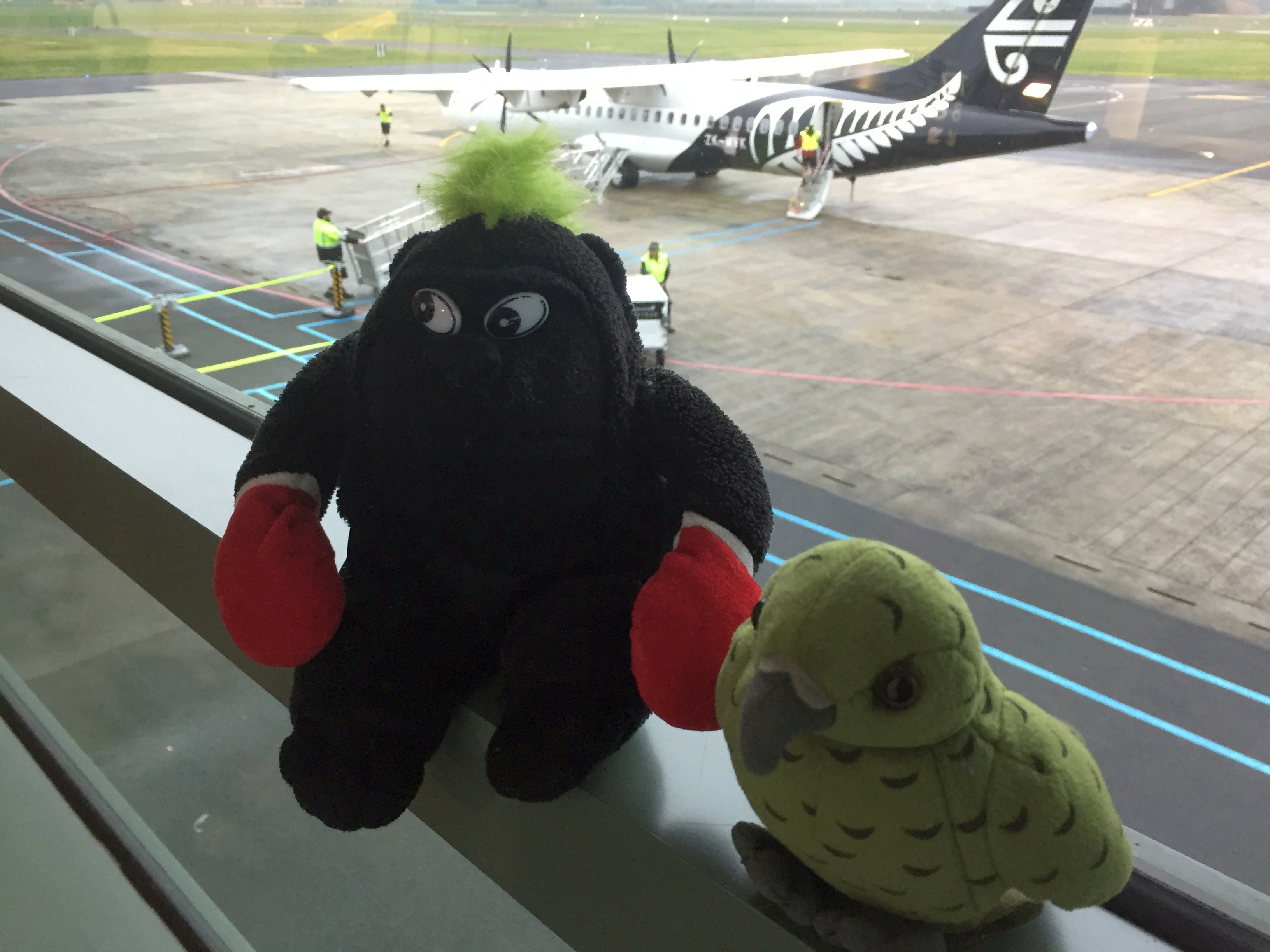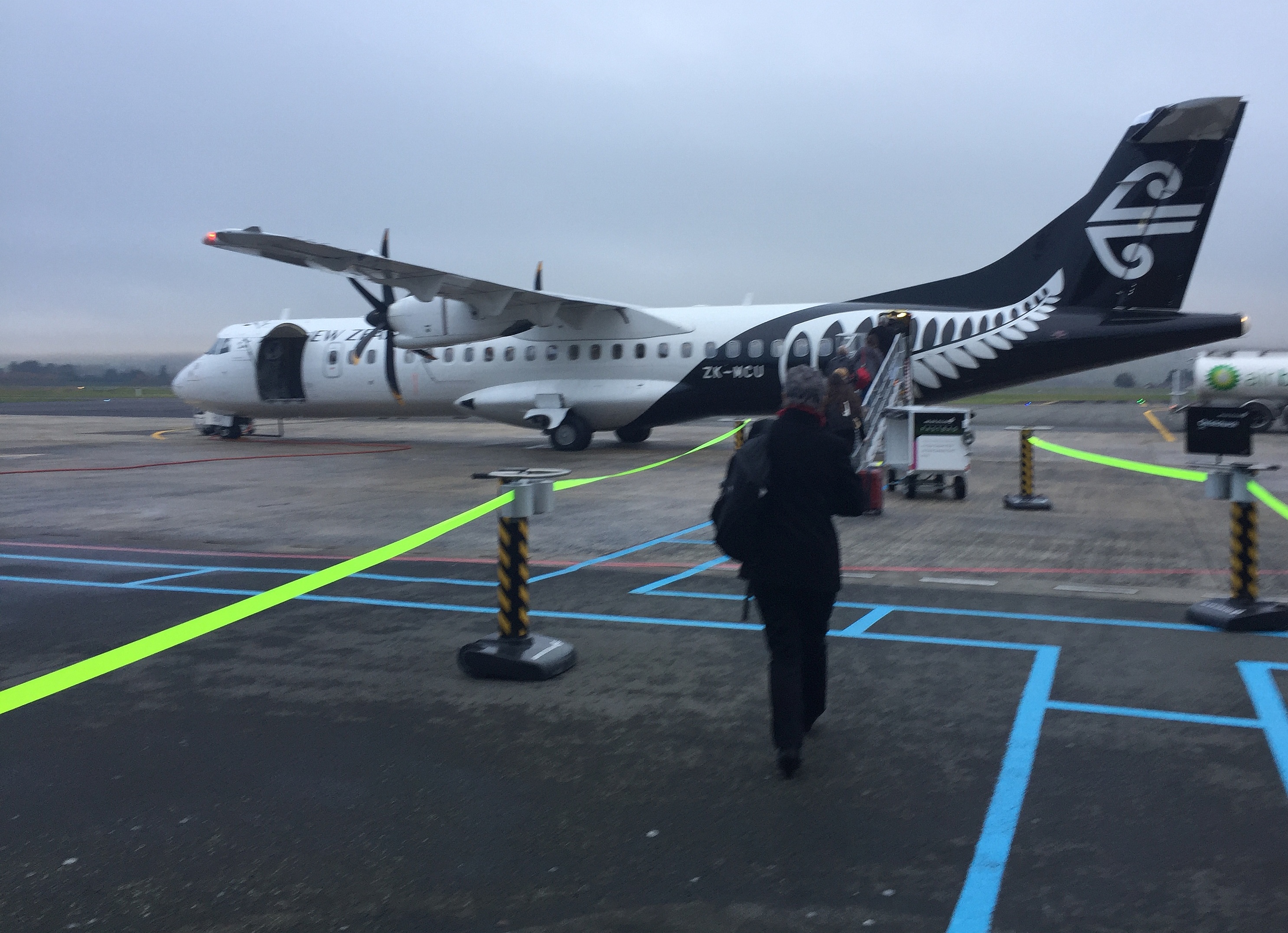You can contact LEARNZ, part of CORE Education, at:
Postal Address:
PO Box 13 678,
Christchurch 8141,
New Zealand
Kia ora koutou,
I have never seen a North Island kōkako so I’ve been looking forward to this field trip for a long time. Kōkako are a rare wattlebird found nowhere else in the world and I feel very lucky to have an opportunity to not only see one of these unique birds but also to help with its recovery.
The ambassadors were awake early this morning, full of excitement. They couldn’t wait to begin their journey to Hamilton. Unfortunately, Dunedin Airport was smothered in a thick layer of fog and you were greeted with chaos at the check-in. The airport was packed with frustrated travellers all trying to reschedule their flights. After several cancellations and a wait of over six hours you finally managed to board a flight to Christchurch. Instead of flying to Hamilton you had to fly to Auckland and then drive over three hours to Pureora. After taking off, it didn’t take long to break out of the layer of fog but thick cloud remained over much of the country.
You caught glimpses of the landscape below as you flew north to Christchurch. The ambassadors were looking forward to seeing snow on the hills but instead all that could be seen was a sea of cloud. The cold, grey weather made me wonder about how kōkako cope with winter. Tomorrow you will learn this and so much more about kōkako. You will head out into Pureora Forest south of Hamilton to try and catch kōkako so they can be taken to Mount Pirongia.
Back in the 1990s the few kōkako left on Mount Pirongia were removed because there were too many predators, such as ship rats and possums, which were killing kōkako chicks and the female kōkako on the nest. Since then the Pirongia Te Aroaro o Kahu Restoration Society have been working with iwi and community volunteers to trap predators and restore the environment. This work has been done with the dream that one day kōkako would once again be heard at Pirongia. This dream is now becoming a reality with birds being translocated (moved) from Pureora to Pirongia.
Dave Bryden is an ecologist who will show you how to safely capture kōkako so they can be banded, given a health check and transported to Pirongia. Pureora was once a busy timber village. Today just a few houses remain. Sections of forest were logged between 1930 and the early 1970s. Thankfully, Pureora Forest Park still has one of the largest areas of native broadleaf podocarp forest in the North Island. Early tomorrow morning you will head into the forest beneath towering trees to hunt for kōkako. After a short stop-over in Christchurch you flew to Auckland. There wasn’t much to see in the dark and it was a relief to eventually arrive in Auckland. From here you picked up a rental car and headed south through Hamilton and on to the tiny village of Pureora.
After such a long day of travel everyone was keen for an early night. Don’t forget to set your alarm because Dave is expecting to see you at 6.30am tomorrow.
See you then,
Shelley the LEARNZ field trip teacher.

The ambassadors get ready to board their flight to Christchurch after long delays due to fog closing Dunedin Airport. Image: LEARNZ.

After a seven hour delay the weather finally lifted enough to allow you to fly to Christchurch. Image: LEARNZ.
Shelley the LEARNZ field trip teacher is relieved to finally be on her way to Christchurch to begin the Kōkako field trip. Image: LEARNZ.
All you could see was layer of cloud over the country through the rather grimy window of the plane. Image: LEARNZ.
Despite all the delays the ambassadors enjoy the flight north. Image: LEARNZ.

It was dark by the time you landed in Christchurch. Image: LEARNZ.
It was a relief to see the lights of Auckland after so many flight delays today. Image: LEARNZ.